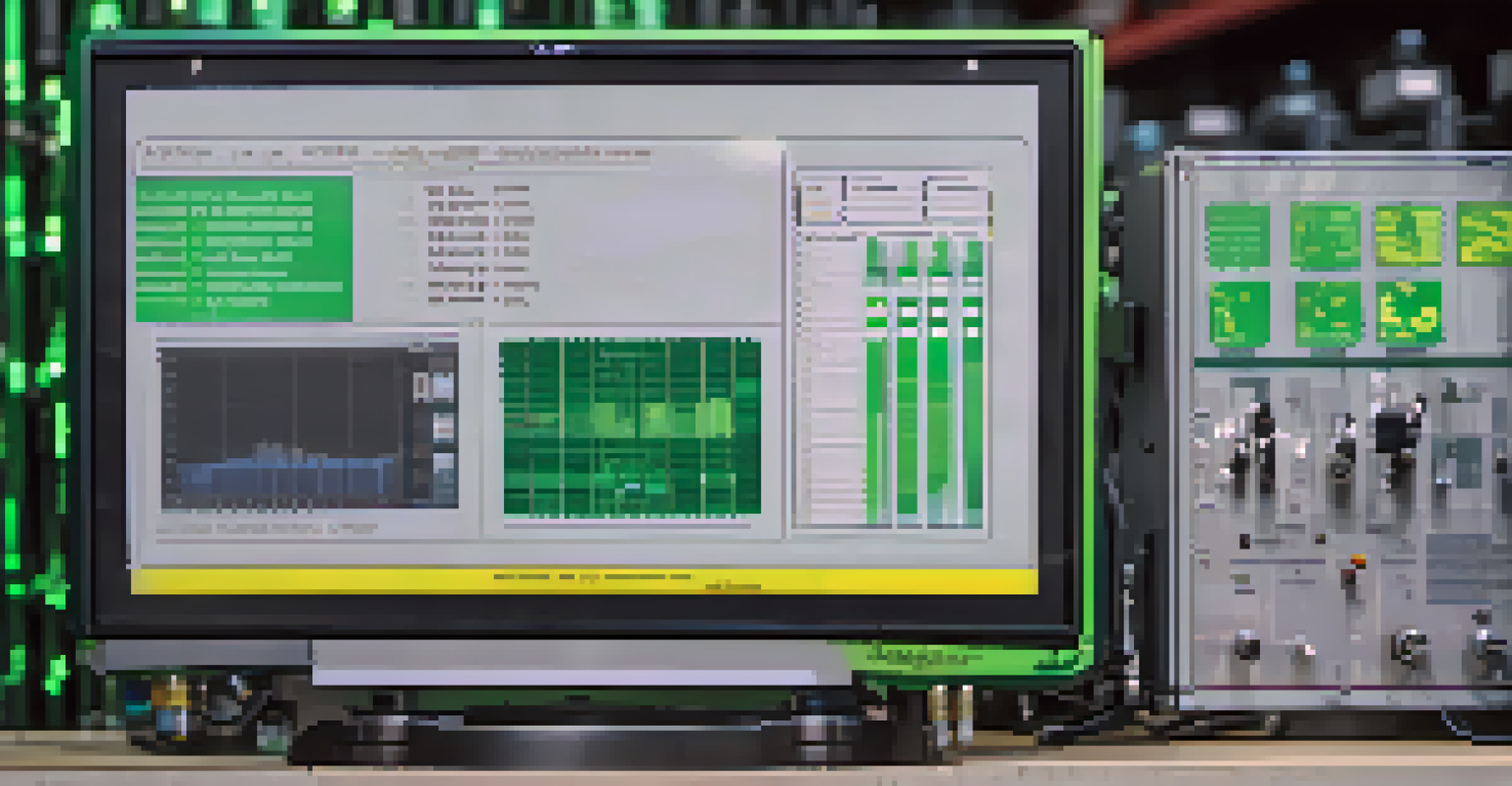Understanding Predictive Analytics in AI Maintenance Systems

What is Predictive Analytics in AI Maintenance Systems?
Predictive analytics refers to the use of data, statistical algorithms, and machine learning techniques to identify the likelihood of future outcomes based on historical data. In the context of AI maintenance systems, it allows organizations to anticipate equipment failures before they occur. This proactive approach helps in minimizing downtime and reducing maintenance costs, making operations more efficient.
The best way to predict the future is to create it.
For instance, consider a manufacturing plant where machines are equipped with sensors that collect data on temperature, vibration, and operational efficiency. By applying predictive analytics, the system can analyze this data and predict when a machine is likely to fail. This means maintenance can be scheduled just in time, preventing unexpected breakdowns that could halt production.
Overall, predictive analytics transforms maintenance strategies from reactive to proactive, significantly enhancing operational resilience and saving resources. As AI technology continues to evolve, its integration with predictive analytics will only become more sophisticated, providing even deeper insights into machinery health.
Benefits of Predictive Analytics in Maintenance Systems
The adoption of predictive analytics in maintenance systems brings numerous benefits. One of the primary advantages is cost savings by reducing unplanned downtime and maintenance expenses. When companies can anticipate when equipment will fail, they can avoid costly repairs and operational interruptions.

Moreover, predictive analytics improves safety in the workplace. By predicting equipment failures, organizations can address potential hazards before they lead to accidents. For example, if a piece of machinery is showing signs of wear and tear, it can be serviced before it poses a risk to workers.
Predictive Analytics Enhances Efficiency
By anticipating equipment failures, predictive analytics transforms maintenance from reactive to proactive, minimizing downtime and reducing costs.
Lastly, this approach fosters better resource allocation. Instead of dedicating time and manpower to regular maintenance checks, teams can focus on tasks that add value to the organization. This shift not only boosts productivity but also enhances employee satisfaction, as they can work on more engaging projects.
Key Components of Predictive Analytics Systems
Predictive analytics systems are built on three key components: data collection, data analysis, and data interpretation. First, data collection involves gathering relevant information from various sources, such as sensors, maintenance records, and operational logs. This raw data forms the foundation upon which predictive models are built.
Without data, you're just another person with an opinion.
Next comes data analysis, where statistical methods and machine learning algorithms sift through the collected data. By identifying patterns and correlations, these systems can make predictions about future equipment performance. For instance, a sudden spike in vibration readings may suggest imminent failure, prompting a preemptive maintenance check.
Finally, data interpretation translates predictions into actionable insights. This step is crucial because it involves communicating findings to maintenance teams in a clear and understandable manner. By using dashboards and alerts, organizations can ensure that the right people are informed about potential issues, enabling timely interventions.
Challenges in Implementing Predictive Analytics
While the benefits of predictive analytics are compelling, implementing these systems can come with challenges. One significant hurdle is data quality; poor or incomplete data can lead to inaccurate predictions. Organizations must invest in robust data collection practices to ensure that their predictive models are based on reliable information.
Another challenge is the integration of predictive analytics into existing maintenance workflows. Companies may face resistance from employees who are accustomed to traditional maintenance approaches. Effective training and communication are essential to help teams understand the value of predictive analytics and how it enhances their roles.
Improved Safety in Workplaces
Predictive analytics not only predicts equipment failures but also helps organizations address potential hazards, enhancing workplace safety.
Lastly, there are costs associated with setting up predictive analytics systems, including software, hardware, and training. However, many organizations find that the long-term savings and efficiency gains far outweigh these initial investments, making it a worthwhile endeavor.
Real-World Examples of Predictive Analytics in Action
Numerous industries are leveraging predictive analytics to enhance their maintenance strategies. For example, in the aviation sector, airlines use predictive analytics to monitor engine performance, allowing them to predict maintenance needs and avoid unscheduled repairs. This approach not only saves money but also ensures passenger safety.
In the energy sector, utility companies employ predictive analytics to forecast equipment failures in power grids. By analyzing data from sensors and operational metrics, they can address issues before they lead to outages, ensuring consistent service delivery. This proactive maintenance strategy has proven essential in managing increasingly complex energy systems.
Another notable example is in the automotive industry, where manufacturers utilize predictive analytics to enhance vehicle maintenance. By analyzing driving behavior and vehicle performance data, companies can provide tailored maintenance recommendations to drivers, improving vehicle reliability and customer satisfaction.
The Future of Predictive Analytics in AI Maintenance
The future of predictive analytics in AI maintenance systems looks promising, with advancements in technology continually enhancing its capabilities. As artificial intelligence evolves, predictive models will become more accurate and capable of analyzing larger datasets in real time. This means organizations can expect even more precise predictions and insights into equipment performance.
Furthermore, the integration of the Internet of Things (IoT) will play a crucial role in the future of predictive analytics. With more devices connected to the internet, data collection will become seamless and more comprehensive. This influx of data will enrich predictive models, allowing for better maintenance decisions and strategies.
Future Innovations in Maintenance
The ongoing evolution of AI and the IoT will further enhance predictive analytics, leading to more accurate predictions and tailored maintenance solutions.
In addition, as industries increasingly recognize the value of predictive analytics, we can expect a rise in collaborative efforts between technology providers and businesses. This collaboration will drive innovation and lead to the development of tailored solutions that meet specific industry needs, ultimately transforming how maintenance is approached across various sectors.
Conclusion: Embracing Predictive Analytics
As we have explored, predictive analytics significantly enhances AI maintenance systems, offering a range of benefits that can transform organizational efficiency. By anticipating equipment failures and optimizing maintenance schedules, businesses can save costs, improve safety, and allocate resources more effectively. The key lies in understanding and addressing the challenges associated with implementation.
With real-world examples demonstrating its success across various industries, it’s clear that predictive analytics is not just a trend but a fundamental shift in how maintenance is approached. Organizations that embrace this technology will not only stay competitive but also pave the way for future innovations.

In conclusion, investing in predictive analytics is an investment in the future of maintenance. As technology continues to evolve, those who harness its power will find themselves better equipped to face the challenges of tomorrow, ensuring their operations run smoothly and efficiently.